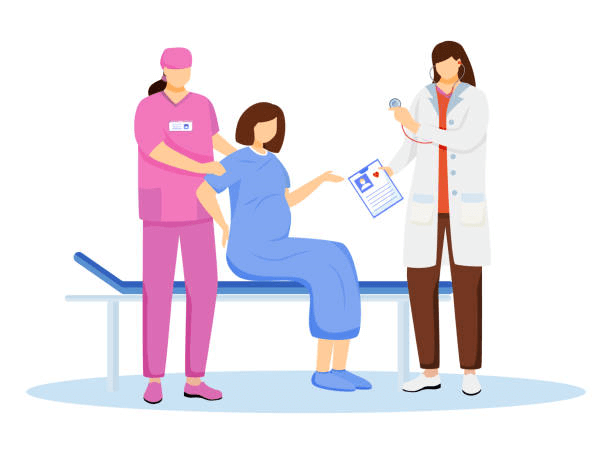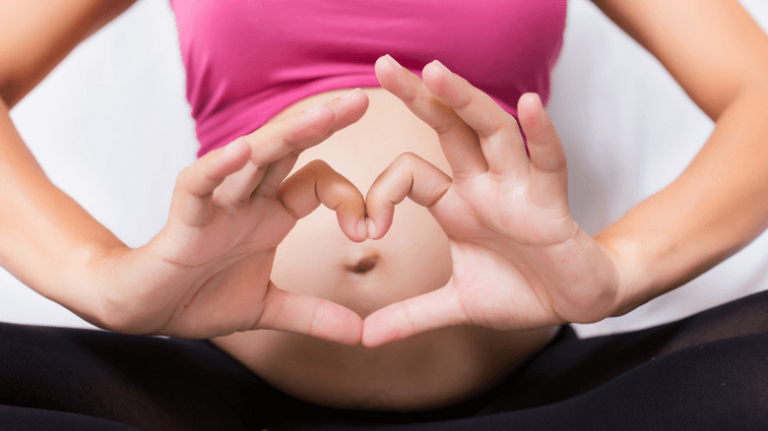What Happens to Your Body After Giving Birth?

Giving birth is an incredible, life-changing experience. But while much of the focus tends to be on the baby, your body undergoes dramatic changes after childbirth too. From hormonal shifts to physical recovery, understanding what happens to your body after giving birth can help you better navigate the postpartum period.
Here’s a breakdown of the most common physical changes you can expect after giving birth.
1. Uterus Contraction and Shrinking
After childbirth, your uterus begins to contract and gradually shrink back to its pre-pregnancy size, a process known as involution. These contractions, often called “afterpains,” can feel like mild to moderate cramping, similar to menstrual cramps. The uterus should return to its normal size within six weeks, though the contractions may only last for a few days.
2. Vaginal Discharge (Lochia)
In the days and weeks following birth, you will experience vaginal discharge called lochia, which consists of blood, mucus, and tissue from the uterus. It starts off bright red, resembling a heavy period, and gradually lightens in color over time, turning pinkish, then yellow or white as it tapers off.
This discharge can last anywhere from two to six weeks. It’s important to use sanitary pads instead of tampons during this time to prevent infection.
3. Soreness and Perineal Healing
Whether you had a vaginal delivery or a C-section, your body will need time to heal. If you delivered vaginally, you might feel soreness in the perineal area (the area between your vagina and anus), especially if you had stitches or an episiotomy. Sitting on a cushion, using cold packs, or taking warm sitz baths can help ease discomfort.
For those who had a C-section, the recovery process will involve taking care of the surgical incision. Follow your doctor’s recommendations for keeping the area clean and managing pain to ensure proper healing.
4. Breast Changes and Milk Production
Your breasts will undergo significant changes after giving birth, whether or not you plan to breastfeed. In the days after delivery, your breasts will begin producing colostrum, a nutrient-rich first milk for your baby. After a few days, your milk will come in, leading to breast engorgement, where your breasts feel swollen and tender.
If you choose to breastfeed, your milk production will regulate over time as your body adjusts to your baby’s feeding needs. If you’re not breastfeeding, your milk supply will decrease naturally, but you may still experience discomfort in the early days.
5. Hormonal Fluctuations and Mood Changes
During pregnancy, your body is flooded with hormones, and after giving birth, those hormone levels drop rapidly. This sudden hormonal shift can lead to what’s commonly known as the “baby blues,” a period of emotional ups and downs. Symptoms may include feeling overwhelmed, irritable, or teary for no apparent reason.
For most women, these feelings subside within two weeks. However, if you’re experiencing more severe symptoms such as persistent sadness, anxiety, or difficulty bonding with your baby, you may be dealing with postpartum depression. It’s crucial to talk to your healthcare provider if you have concerns about your mental health.
6. Hair and Skin Changes
During pregnancy, many women experience thicker, fuller hair due to increased estrogen levels. After birth, however, hair often starts to shed as hormone levels normalize. This hair loss can be alarming but is usually temporary. Most women notice their hair returning to its usual state within a few months postpartum.
Additionally, your skin may undergo changes after pregnancy. Some women notice that skin conditions like acne or melasma (dark patches on the skin) improve, while others may develop new concerns. Staying hydrated and using gentle skincare products can help support your skin’s recovery.
7. Appetite and Nutritional Needs
Your appetite may change after giving birth, especially if you are breastfeeding, which requires extra calories to produce milk. You might feel hungrier than usual, so it’s important to focus on nutrient-dense foods that support healing and provide the energy you need. For more information on how appetite can fluctuate during pregnancy and the postpartum period, check out this article.
8. Abdominal Muscles and Postpartum Belly
After delivery, you may still look pregnant for a while as your abdominal muscles and skin take time to recover. During pregnancy, your abdominal muscles stretch to accommodate your growing baby, and it can take several months for them to regain strength and firmness. For some women, the separation of the abdominal muscles, known as diastasis recti, can be more pronounced, requiring specific exercises or physical therapy to help them heal.
9. Urinary and Bowel Changes
Many women experience changes in their bladder and bowel habits after giving birth. You might notice difficulty controlling your bladder, leading to occasional leaks, especially when you laugh, sneeze, or cough. This is due to the weakening of the pelvic floor muscles, which support your bladder, uterus, and rectum.
Pelvic floor exercises, such as Kegels, can help strengthen these muscles and improve bladder control. Bowel movements may also be more challenging, particularly if you’ve had a vaginal tear or stitches. Drinking plenty of water and eating fiber-rich foods can help ease constipation.
10. Emotional and Mental Changes
Your emotional well-being is just as important as your physical recovery. The first few weeks after childbirth can be overwhelming as you adjust to life with a newborn. Fatigue, stress, and fluctuating hormones can all take a toll on your mental health. Surrounding yourself with a strong support system and taking time for self-care are essential to navigating this transition smoothly.
If you’re feeling anxious or overwhelmed, you’re not alone. Many new mothers experience these feelings, especially during the first trimester. For practical advice on surviving the early days of pregnancy and motherhood, take a look at this complete guide.
Conclusion
The postpartum period is a time of great change, both physically and emotionally. From shrinking uterus to mood swings, the transformation your body goes through after childbirth can be challenging, but understanding these changes helps you prepare for what’s ahead. While every woman’s recovery is different, practicing self-care and giving your body time to heal will ensure you’re ready for the exciting journey of motherhood.
For more guidance on pregnancy and postpartum care, visit Babyix.






